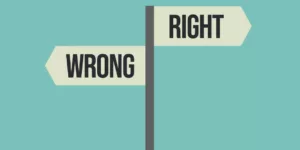A few years ago, there was a lot of executive advice arguing that it was better to make decisions quickly without research than to stand still. This was likely the foundation of Zuckerberg’s strategy to “move fast and break things,” and may be the core cause of how he broke Meta’s workforce. This isn’t to say that having a policy that accepts breakage is necessarily bad. I’ve seen companies fail because they are unwilling to take necessary risks to be successful. My old friend Steve Ballmer’s failures at Microsoft often had to do more with not taking necessary risks (like the Microsoft Phone and Zune, which were massively underfunded) than taking unnecessary ones (Yahoo, Nokia).
I once spoke with and forecasted the firing of a Ford CEO after he shared with me Ford’s risk policy. He’d said that he’d accept risk-taking on any vehicle but the Ford-150, and god save anyone that screwed up that vehicle. My foundation for the prediction is that uneven policies aren’t sustainable either. You accept that some decisions may fail. If the Ford-150 folks won’t tolerate risk, that’s a problem in a world where risk-taking is critical to advancement.
The right way to manage risk is by balancing. Risks must be reasonable but not avoided completely. Too little willingness to take risks (and too much focus on blame) can be just as damaging to a company as too little restraint.
Move fast and break things is unsustainable
Orienteering is a type of race where you use a map but there is no track, which is much like strategic management. Back when I was a competitive analyst, I attended a class sponsored by SCIP (the Society for Competitive Intelligence Professionals). The expert teaching the class drew an X/Y chart with speed on the horizonal axis and direction on the vertical one and argued that the most successful companies were in the upper right of the grid, while most failures were in the lower right. His point was that if you run full speed in the wrong direction, much like an orienteering runner choosing to take off before looking at the map, you end up going in the wrong direction quickly.
I was also a senior internal auditor for a time. Many of the failures I observed then (and later as an independent analyst) were teams and companies that seemed to be doing what Zuckerberg advised by running fast and experiencing massive breakage. They were too focused on moving quickly instead of on making the right moves.
When talking about direction and speed, the Titanic is an example of moving fast and breaking things. When on its maiden cruise, the owners wanted to highlight how fast the ship could go and demanded the captain cruise at top speed without first assuring she was capable of that sustained speed or that the direction was safe. The Titanic sank, thus validating that the risk was excessive, and a more reasonable course should have been selected.
NVIDIA vs. Facebook and the Metaverse
Facebook and NVIDIA both saw the metaverse as an opportunity. But NVIDIA approached the opportunity pragmatically and focused its efforts on the business market where initial technology is often more successful (smartphones started there as well). It built up partners and an ecosystem, then brought in customers on trial and used the technology itself before launching its now incredibly successful Omniverse metaverse variant. Did NVIDIA take risks? Sure, and they were big ones, but the risks were reasonable, its direction was always sustained with both interest and resources (NVIDIA’s and others’), and it spread the venture out over decades.
In contrast, Facebook just took off, partnering was almost non-existent, leaders that argued they should focus first on experience rather than cost (a more reasonable and historically, as NVIDIA showcased, more successful approach) were let go in favor of Zuckerberg’s march to the consumer market where the far cheaper 3D TV effort had failed spectacularly. If Zuckerberg used this same strategy in an orienteering race, he’d have wondered how he ended up in the wrong state as he did in this case, since he clearly ended up in a state of failure (sorry for the pun).
Once you lose the trust of your people, it is hard to get that trust back, and you’ve crippled your company. His best path would be to do what IBM did with Lou Gerstner and bring in an expert to fix the problem he created, someone that the employees currently either trust or don’t know.
Wrapping up: Lessons learned
In tech, we’ve had a lot of good advice used inappropriately, like Forced Ranking. It’s appropriate when you’re trying to save a near-dead company that has been mismanaged, but, like triage, is inappropriate for day-to-day general operations. Successful management must be willing to take risks and tolerate failure if that failure resulted from reasonable decisions that were well thought through. But you don’t want executives making big decisions without knowing anything about what they are doing or you’ll get what Zuckerberg got, a Titanic-sized outcome (though Facebook is far from dead and no where near as bad off as IBM was when it brought in Lou Gerstner and the more important Jerry York who was even more critical initially to a favorable outcome). I would argue that, like IBM, Facebook needs a new CEO to turn the company around.
You need to listen to the experts you have, not force them out of the company, and you need to emphasize that blame is not a focus to allow for reasonable risks, but emphasize that unreasonable risks (those that lack adequate foundation) aren’t going to be tolerated with causal analysis as the foundation for telling the difference.
In short, Zuckerberg needs to stop running without using a map, learn from those that have gone before to help him set direction and prioritize that direction and execution over speed and open-ended mistakes. Elon Musk and Twitter is an even better demonstration of what happens when you prioritize speed over direction as he is moving at light speed in what is clearly the wrong direction.








